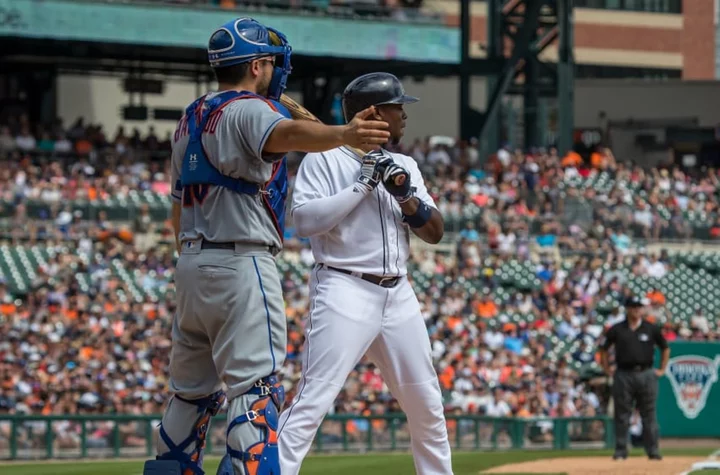There are several different ways a baseball player can reach first base in baseball. They can get a hit, get on base thanks to an error, get hit by a pitch, or get walked.
A walk is a free pass given to a batter to reward them (or penalize the pitcher if you are a glass-half-empty type of person) for having patience at the plate, or a good eye, inferring they are able to recognize balls pitched out of the strike zone.
The name is because the batter can walk to first instead of run, however doing so would break one of the seemingly endless list of unwritten rules, so players will typically jog to first if they record a walk.
A walk is issued when a hitter accumulates four balls (pitches outside the strike zone) before they record three strikes (swings and misses or balls pitched inside the strike zone), or before their at-bat is ended by putting a ball in play.
If a player already occupies first base when a batter is walked, they must move to second base to make room for the new runner, since two players can not occupy the same base. If the bases are loaded (player on each base) when a batter is walked, all the runners advance, and a run scores. The batter is credited with an RBI (run batted in).
The acronym for a walk in baseball is BB which stands for "base on balls". IBB, or intentional base on balls (also called an intentional walk), is when a catcher stands up, puts his arm out away from the hitter, and four pitches are lobbed excessively outside the strike zone so the batter will be issued a walk, and the ball can not be accidentally struck and put in play.
This is a strategy used when a team fears what the hitter will do if he does put the ball in play (get a hit, possibly a homerun), or if there is a base open and the pitching team wants to create a force out (ex: a player on second, but nobody on first. An intentional walk creates a force out at first second and third on a ball in play instead of just at first base).
History of the walk in MLB
In 1863, the walk was instituted as a penalty for unsportsmanlike conduct. If a pitcher refused to throw a hittable pitch, they were given a warning, and after several warnings, the hitter was allowed to go to first base without actually getting a hit.
This would be after nine pitches deemed unhittable (there was no strike zone yet) and all players on base would advance, even if there was no force. So if there was only a player on third, they would score on a walk, even though the bases were not loaded.
In 1869 this rule was changed so that runners only advanced if they were forced to. In 1880, the number of unhittable pitches required to be awarded a walk was dropped to eight. The requirement was further reduced to six pitches in 1884, and in 1887 a uniform strike zone was adopted by the American and National Leagues, and the number of pitches outside this strike zone was lessened to five in order for a hitter to be given a walk.
Finally, in 1889, that number was reduced to four and has remained there for over 130 years. In 2017 a rule was passed allowing the pitching team to intentionally walk a batter without throwing a pitch (in order to save arm usage of pitchers), and now requires just a signal from the dugout.
MLB walk records
The most times a player has reached base via walk in a single game is six times. This was achieved by Jimmy Foxx, Andre Thornton, Jeff Bagwell, and Bryce Harper.
The most times a player has been walked in a season is 232 times, which was achieved by Barry Bonds in the 2004 season. Bonds also is second on the list with 198 walks in 2002, third with 177 walks in 2001, and ninth with 151 walks in 1996.
Barry Bonds also holds the record for most walks in a career 2,558. Ricky Henderson is second with 2,190 and Babe Ruth is third with 2,056. A whopping 688 of Bonds' walks were intentional, which is the all-time record. Albert Pujols is second with 316 intentional walks.

